Speakers: Chris Anderson, Michael Archer, David Burney, George Church, David Ehrenfeld, John Fahey, Alberto Fernández-Arias, Hank Greely, Susan Haig, Kate Jones, Henri Kerkdijk-Otten, Isabella Kirkland, Robert Lanza, Michael Mace, Michael McGrew, Ben Novak, Hendrik Poinar, William Powell, Kent Redford, Oliver Ryder, Joel Sartore, Beth Shapiro, James Tate, Stanley Temple, Carl Zimmer
Chris Anderson
Curator, TED
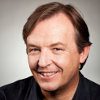 Chris Anderson is the curator of the TED Conference, a conference that explores the power of ideas to make a difference in the world. Anderson was born in Pakistan in 1957. His parents were medical missionaries and he spent most of his early life in Pakistan, India and Afghanistan. In 1978 he graduated from Oxford University with a degree in Philosophy, Politics, and Economics. In 1985 he launched Future Publishing, which ultimately expanded to more than 130 magazines, including Business 2.0, and more than 1,500 employees.
Chris Anderson is the curator of the TED Conference, a conference that explores the power of ideas to make a difference in the world. Anderson was born in Pakistan in 1957. His parents were medical missionaries and he spent most of his early life in Pakistan, India and Afghanistan. In 1978 he graduated from Oxford University with a degree in Philosophy, Politics, and Economics. In 1985 he launched Future Publishing, which ultimately expanded to more than 130 magazines, including Business 2.0, and more than 1,500 employees.
In 2001 Anderson acquired the TED Conference through his non-profit Sapling Foundation. Under his stewardship, over 1000 TED talks have been released free online to a global audience. He oversaw introduction of the TED Prize, the TED Fellows Program, the TED open translation program, the TED-ED initiative, and the TEDx program that allows hundreds of independently organized TED-like events to be held around the world.
Michael Archer
Professor, University of New South Wales, Sydney, Australia
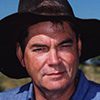 Mike Archer was born in Sydney, Australia, but grew up in Appalachia in the USA where, while learning to play the banjo and make moonshine, he became totally obsessed with fossils from the age of 11. After graduating from Princeton University he returned to Australia, did his PhD in the University of Western Australia, became Curator of Mammals at the Queensland Museum, Lecturer in the University of New South Wales, Director of the Australian Museum in Sydney, Dean of Science at the University of NSW and now a Prof. and head of the Evolution of Earth & Life Sciences Research Group. His research projects span the deep past such as the World Heritage fossil deposits at Riversleigh, the fragile present such as conservation through sustainable use of native resources including having native animals as pets, securing the future based on the wisdom of the fossil record, and trying to bring extinct species back into the world of the living. He has supervised more than 50 PhD students, produced 265 scientific publications including 15 books and received 25 awards including Fellowship in the Academy of Science, Eureka Prize for the Promotion of Science and Member of the Order of Australia.
Mike Archer was born in Sydney, Australia, but grew up in Appalachia in the USA where, while learning to play the banjo and make moonshine, he became totally obsessed with fossils from the age of 11. After graduating from Princeton University he returned to Australia, did his PhD in the University of Western Australia, became Curator of Mammals at the Queensland Museum, Lecturer in the University of New South Wales, Director of the Australian Museum in Sydney, Dean of Science at the University of NSW and now a Prof. and head of the Evolution of Earth & Life Sciences Research Group. His research projects span the deep past such as the World Heritage fossil deposits at Riversleigh, the fragile present such as conservation through sustainable use of native resources including having native animals as pets, securing the future based on the wisdom of the fossil record, and trying to bring extinct species back into the world of the living. He has supervised more than 50 PhD students, produced 265 scientific publications including 15 books and received 25 awards including Fellowship in the Academy of Science, Eureka Prize for the Promotion of Science and Member of the Order of Australia.
David Burney
Professor of Conservation Paleobiology, National Tropical Botanical Garden (Kaua`i)
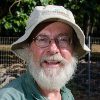 David Burney’s research has focused on paleoecological studies, causes of extinction, and preservation of endangered species. He has over 40 years of practical experience in conservation, serving as a technical consultant for many conservation organizations and government agencies.
David Burney’s research has focused on paleoecological studies, causes of extinction, and preservation of endangered species. He has over 40 years of practical experience in conservation, serving as a technical consultant for many conservation organizations and government agencies.
Prior to moving to Kaua`i in 2004 to become Director of Conservation at the National Tropical Botanical Garden, he was a Professor at Fordham University in New York for 15 years. He received a M.Sc. in Conservation Biology from the University of Nairobi (Kenya) and a Ph.D. in Zoology with a minor in Botany from Duke University. He is author of over 100 scientific articles and monographs. In 2006 he was awarded a Guggenheim Fellowship to write a book for the general public on his work at Makauwahi Cave on Kaua`i. His research has been featured on National Geographic Television, Discovery Channel, Hawaii Public Television, NOVA, and NPR.
With his wife Lida Pigott Burney, he has established the Makauwahi Cave Reserve on Kaua`i to protect, research, and restore Hawaii’s richest fossil and archaeological site and reestablish thousands of native plants on the surrounding landscape. Their studies have included rewilding techniques, inter situ conservation, and ecological surrogacy. For more information, see www.cavereserve.org.
George Church
Robert Winthrop Professor of Genetics, Harvard Medical School
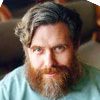 George Church is Professor of Genetics, Harvard Medical School, Director of PersonalGenomes.org, providing the world’s only open-access information source for human Genomic, Environmental & Trait data (GET). His 1984 Harvard PhD included the first methods for direct genome sequencing, molecular multiplexing, barcoding & automation. These lead to the first commercial genome sequence (pathogen, Helicobacter pylori) in 1994 . His innovations in “next generation” genome sequencing and synthesis & cell/tissue engineering resulted in 12 companies including medical genomics (Knome, Alacris, AbVitro, GoodStart, Pathogenica), synthetic biology (LS9, Joule , Gen9, Warp Drive) as well as new privacy, biosafety & biosecurity policies. He is director of the NIH Center for Excellence in Genomic Science. His honors include election to NAS & NAE, Hoogendijk Prize & Franklin Laureate for Achievement in Science.
George Church is Professor of Genetics, Harvard Medical School, Director of PersonalGenomes.org, providing the world’s only open-access information source for human Genomic, Environmental & Trait data (GET). His 1984 Harvard PhD included the first methods for direct genome sequencing, molecular multiplexing, barcoding & automation. These lead to the first commercial genome sequence (pathogen, Helicobacter pylori) in 1994 . His innovations in “next generation” genome sequencing and synthesis & cell/tissue engineering resulted in 12 companies including medical genomics (Knome, Alacris, AbVitro, GoodStart, Pathogenica), synthetic biology (LS9, Joule , Gen9, Warp Drive) as well as new privacy, biosafety & biosecurity policies. He is director of the NIH Center for Excellence in Genomic Science. His honors include election to NAS & NAE, Hoogendijk Prize & Franklin Laureate for Achievement in Science.
David Ehrenfeld
Professor of Biology, Rutgers University
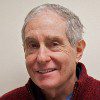 David Ehrenfeld is Professor of Biology in the Department of Ecology, Evolution, and Natural Resources, School of Environmental and Biological Sciences, Rutgers University. He received his B.A. from Harvard College, his M.D. from Harvard Medical School, and his Ph.D. (zoology) from the University of Florida. He is author of seven books, beginning with the pioneering textbook Biological Conservation (Holt, Rinehart & Winston, 1970), and including The Arrogance of Humanism (Oxford University Press, 1978, 1981), Becoming Good Ancestors: How We Balance Nature, Community, and Technology (Oxford University Press, 2009), and, with Carol Mack, a science fiction novel, The Chameleon Variant (Dial Press, 1980). The founding editor of the international scientific journal Conservation Biology, he has written magazine and newspaper articles for Harper’s Magazine, New Scientist, Technology Review, The New York Times, The Los Angeles Times, and other publications. He has lectured widely to diverse groups in the United States, Canada, China, and India. His honors include election as a Fellow of the American Association for the Advancement of Science, receipt of the Distinguished Achievement Award of the Society for Conservation Biology, and selection as 2011 Teacher of the Year, Rutgers School of Environmental and Biological Sciences.
David Ehrenfeld is Professor of Biology in the Department of Ecology, Evolution, and Natural Resources, School of Environmental and Biological Sciences, Rutgers University. He received his B.A. from Harvard College, his M.D. from Harvard Medical School, and his Ph.D. (zoology) from the University of Florida. He is author of seven books, beginning with the pioneering textbook Biological Conservation (Holt, Rinehart & Winston, 1970), and including The Arrogance of Humanism (Oxford University Press, 1978, 1981), Becoming Good Ancestors: How We Balance Nature, Community, and Technology (Oxford University Press, 2009), and, with Carol Mack, a science fiction novel, The Chameleon Variant (Dial Press, 1980). The founding editor of the international scientific journal Conservation Biology, he has written magazine and newspaper articles for Harper’s Magazine, New Scientist, Technology Review, The New York Times, The Los Angeles Times, and other publications. He has lectured widely to diverse groups in the United States, Canada, China, and India. His honors include election as a Fellow of the American Association for the Advancement of Science, receipt of the Distinguished Achievement Award of the Society for Conservation Biology, and selection as 2011 Teacher of the Year, Rutgers School of Environmental and Biological Sciences.
John Fahey
Chairman and CEO, National Geographic Society
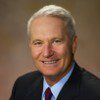
Alberto Fernández-Arias
Head of the Service of Hunting, Fishing and Wetlands, Aragon Government, Spain
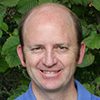 1988: Doctor in Veterinary Medicine, Complutense University, Madrid, Spain.
1988: Doctor in Veterinary Medicine, Complutense University, Madrid, Spain.
1996: PhD Thesis: “Reproductive characteristics and embryo transfer in the Spanish ibex (Capra pyrenaica hispanica)” University of Zaragoza, Spain.
1989-2003: Project “Reproductive assisted techniques in the Bucardo (Capra pyrenaica pyrenaica) Recovery Plan” Agriculture Research Service, Zaragoza, Spain.
April 1999: Capture and release of the last surviving Bucardo female in the cliffs of Ordesa and Monte Perdido National Park to obtain cell lines. This last female died ten months later.
June 2003: Birth of a bucardo clone. First de-extinction. CITA –ARAGÓN (head of the project: Dr. Folch).
2005-2011: Director of Ordesa and Monte Perdido National Park.
2012 to present: Head of the Service of Hunting, Fishing and Wetlands, Aragon Government, Spain.
Main scientific events related with the Bucardo de-extinction:
• Development of non-stressful superovulatory techniques in the Spanish ibex: long acting neuroleptics plus FSH and Alzet osmotic minipumps, and electronic and gas devices for automatic FSH superovulation.
• First interespecific birth in the Capra Genus by embryo transfer techniques.
• Study of placental hormones (PAG) in interspecies pregnancies.
• Use of hybrids (Spanish ibex x domestic goats) recipients in interspecies embryo transfer in the Capra Genus.
• Birth of extinct Bucardo by cloning.
Hank Greely
Professor, Director of the Center for Law and the Biosciences, Stanford Law School
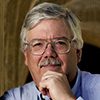 Hank Greely is the Deane F. and Kate Edelman Johnson Professor of Law and Professor, by courtesy, of Genetics at Stanford University. He specializes in ethical, legal, and social issues arising from advances in the biosciences. He has written on issues arising from genetics, neuroscience, and human stem cell research, among other things. He chairs the California Advisory Committee on Human Stem Cell Research and the steering committee of the Stanford University Center for Biomedical Ethics, and directs the Stanford Center for Law and the Biosciences. From 2007 to 2010 he was a co-director of the Law and Neuroscience Project. In 2006, he was elected a fellow of the American Association for Advancement of Science.
Hank Greely is the Deane F. and Kate Edelman Johnson Professor of Law and Professor, by courtesy, of Genetics at Stanford University. He specializes in ethical, legal, and social issues arising from advances in the biosciences. He has written on issues arising from genetics, neuroscience, and human stem cell research, among other things. He chairs the California Advisory Committee on Human Stem Cell Research and the steering committee of the Stanford University Center for Biomedical Ethics, and directs the Stanford Center for Law and the Biosciences. From 2007 to 2010 he was a co-director of the Law and Neuroscience Project. In 2006, he was elected a fellow of the American Association for Advancement of Science.
Professor Greely graduated from Stanford in 1974 and from Yale Law School in 1977. He served as a law clerk for Judge John Minor Wisdom on the United States Court of Appeals and for Justice Potter Stewart of the United States Supreme Court. After working during the Carter Administration in the Departments of Defense and Energy, he entered private practice in Los Angeles in 1981 as a litigator with the law firm of Tuttle & Taylor, Inc. He began teaching at Stanford in 1985.
Susan Haig
President, American Ornithologists’ Union and Supervisory Wildlife Ecologist, USGS
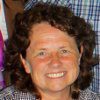 Susan Haig has spent over 30 years working on species facing the brink of extinction. Her research addresses the genetic and demographic factors needed to plan appropriate recovery actions for small populations. Dr. Haig’s long-term efforts include work on Piping Plovers, Spotted Owls, Red-cockaded Woodpeckers, California Condors, and the former avifauna from Guam. Her upcoming book “The California Condor in the Pacific Northwest” forms the basis for defending the historic occurrence of the birds in the region and helps clear the way for bringing condors back to their former range. Currently, she is a Professor of Wildlife Ecology at Oregon State University, a Supervisory Wildlife Ecologist for the U.S. Geological Survey, and a Research Associate of the Smithsonian Institution. She serves as President of the American Ornithologists’ Union, one of the oldest and largest organizations in the world devoted to the scientific study of birds. Last spring she was awarded the Miller Medal, a lifetime achievement award from the Cooper Ornithological Society. Dr. Haig also organizes and carries out team-taught courses on animal movement and migration conservation for students in Central America and South America as well as a Fulbright Fellow in Kenya. Her work with Peter Marra (Smithsonian Institution) on the Migratory Connectivity Project (www.migratoryconnectivityproject.org) further informs global students, policy makers and the public about the impact of conservation on species throughout the annual cycle.
Susan Haig has spent over 30 years working on species facing the brink of extinction. Her research addresses the genetic and demographic factors needed to plan appropriate recovery actions for small populations. Dr. Haig’s long-term efforts include work on Piping Plovers, Spotted Owls, Red-cockaded Woodpeckers, California Condors, and the former avifauna from Guam. Her upcoming book “The California Condor in the Pacific Northwest” forms the basis for defending the historic occurrence of the birds in the region and helps clear the way for bringing condors back to their former range. Currently, she is a Professor of Wildlife Ecology at Oregon State University, a Supervisory Wildlife Ecologist for the U.S. Geological Survey, and a Research Associate of the Smithsonian Institution. She serves as President of the American Ornithologists’ Union, one of the oldest and largest organizations in the world devoted to the scientific study of birds. Last spring she was awarded the Miller Medal, a lifetime achievement award from the Cooper Ornithological Society. Dr. Haig also organizes and carries out team-taught courses on animal movement and migration conservation for students in Central America and South America as well as a Fulbright Fellow in Kenya. Her work with Peter Marra (Smithsonian Institution) on the Migratory Connectivity Project (www.migratoryconnectivityproject.org) further informs global students, policy makers and the public about the impact of conservation on species throughout the annual cycle.
Kate Jones
Professor of Ecology and Biodiversity, University College London and Zoological Society of London
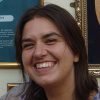 Professor Kate Jones is Chair of Ecology and Biodiversity at University College London and the Zoological Society of London. Kate completed her PhD in 2008 in London and after fellowships at Imperial College London, University of Virginia and Columbia University, took up a permanent research post at Zoological Society of London in 2005 and then University College London in 2012. Her research examines how evolutionary processes generate global biodiversity patterns. This work has led to an understanding of the biological and anthropogenetic drivers of extinction in mammals and has generated some of the first predictive models of mammalian extinction. Kate’s work has also developed the first complete evolutionary tree of mammals, which was used to create the first conservation prioritization list based on evolutionary distinctiveness and global endangerment (www.edgeofexistence.org). Kate’s research also focuses on developing better tools to monitor biodiversity and she has pioneered some citizen science and crowd-thinking methodology to collect and analyze biodiversity sounds (e.g. www.ibats.co.uk and www.batdetective.org). Kate also works closely with the Indicators and Assessments Team at Zoological Society of London, which generate data for the Red List Indices (www.iucnredlist.org) and Living Planet Index (www.zsl.org/science/research-projects/indicators-assessments/index,134,ZI.html).
Professor Kate Jones is Chair of Ecology and Biodiversity at University College London and the Zoological Society of London. Kate completed her PhD in 2008 in London and after fellowships at Imperial College London, University of Virginia and Columbia University, took up a permanent research post at Zoological Society of London in 2005 and then University College London in 2012. Her research examines how evolutionary processes generate global biodiversity patterns. This work has led to an understanding of the biological and anthropogenetic drivers of extinction in mammals and has generated some of the first predictive models of mammalian extinction. Kate’s work has also developed the first complete evolutionary tree of mammals, which was used to create the first conservation prioritization list based on evolutionary distinctiveness and global endangerment (www.edgeofexistence.org). Kate’s research also focuses on developing better tools to monitor biodiversity and she has pioneered some citizen science and crowd-thinking methodology to collect and analyze biodiversity sounds (e.g. www.ibats.co.uk and www.batdetective.org). Kate also works closely with the Indicators and Assessments Team at Zoological Society of London, which generate data for the Red List Indices (www.iucnredlist.org) and Living Planet Index (www.zsl.org/science/research-projects/indicators-assessments/index,134,ZI.html).
Henri Kerkdijk-Otten
Chairman of the Megafauna Foundation
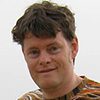 Henri Kerkdijk-Otten has a lifetime of experience in understanding the mega-fauna of our prehistoric world. His interest and research today focuses on the reconstruction and rebirth of Europe’s original mega-fauna such as the Aurochs, Wild Horse and Water Buffalo.
Henri Kerkdijk-Otten has a lifetime of experience in understanding the mega-fauna of our prehistoric world. His interest and research today focuses on the reconstruction and rebirth of Europe’s original mega-fauna such as the Aurochs, Wild Horse and Water Buffalo.
Growing up in an eastern Netherlands farming family that raised cattle, he has grown accustomed to breeding and handling of large animals. He studied History at the University of Nijmegen, with a specialization in the Middle Ages and Archaeology. He currently holds a Master degree in History.
Fostered by his background and trips to Africa, MSc. Kerkdijk-Otten’s life has been dedicated to nature and mega-fauna. In 2008 he came in contact with the Taurus Foundation, which uses feral cattle and ponies in natural grazing schemes. He co-initiated the Tauros Program, an international effort to recreate a bovine that is as similar to the prehistoric aurochs as possible regarding phenotype, behavior and genetics. This project is multidisciplinary and uses a diversity of sciences. .A similar program has been initiated for the European prehistoric horse and Water Buffalo. In 2012 Msc. Kerkdijk-Otten started the Megafauna Foundation, where he holds the position of Chairman. The Foundation will be busy with Rewilding projects in which the recreated herbivores will serve to bring back true wilderness.
Isabella Kirkland
Artist, Research Associate at California Academy of Sciences
http://isabellakirkland.com/paintings/taxa.html
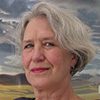 Isabella Kirkland is an artist and a Research Associate at the California Academy of Sciences. She has spent the last 20 years documenting biota in jeopardy of extinction, at life size, using the most permanent painting means possible. In two suites of thematically linked paintings in the Dutch 17th century style, she has depicted 677 species; researched, photographed, measured, and drawn from specimens at natural history museums and herbaria around the world. Isabella attended Guilford College, Virginia Commonwealth University, and the San Francisco Art Institute. Her work has been shown at the National Academy of Sciences, the Toledo Art Museum, the Field Museum, the Tucson Museum of Art, and many other institutions. Isabella is represented by Feature Inc, New York, NY. Her work is currently on exhibit at the Hazel Wolf Gallery at the Brower Center in Berkeley, CA.
Isabella Kirkland is an artist and a Research Associate at the California Academy of Sciences. She has spent the last 20 years documenting biota in jeopardy of extinction, at life size, using the most permanent painting means possible. In two suites of thematically linked paintings in the Dutch 17th century style, she has depicted 677 species; researched, photographed, measured, and drawn from specimens at natural history museums and herbaria around the world. Isabella attended Guilford College, Virginia Commonwealth University, and the San Francisco Art Institute. Her work has been shown at the National Academy of Sciences, the Toledo Art Museum, the Field Museum, the Tucson Museum of Art, and many other institutions. Isabella is represented by Feature Inc, New York, NY. Her work is currently on exhibit at the Hazel Wolf Gallery at the Brower Center in Berkeley, CA.
Robert Lanza
Chief Scientific Officer, Advanced Cell Technology
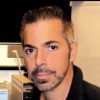 Robert Lanza, M.D. is Chief Scientific Officer at Advanced Cell Technology, and professor at the Institute for Regenerative Medicine at Wake Forest University School of Medicine. He has several hundred publications and inventions, and 30 scientific books: among them, “Essentials of Stem Cell Biology” and “Principles of Tissue Engineering” which are recognized as the definitive references in the field. Others include the “Handbook of Stem Cells” and “Principles of Regenerative Medicine.” He is a former Fulbright Scholar and studied as a student in the laboratories of Richard Hynes (MIT), Jonas Salk (The Salk Institute) and Nobel laureates Gerald Edelman (Rockefeller University) and Rodney Porter (Oxford University). He also worked closely (and co-authored a series of papers) with noted Harvard psychologist B.F. Skinner and heart transplant pioneer Christiaan Barnard. Dr. Lanza received his B.A. and M.D. degrees from the University of Pennsylvania, where he was both a University Scholar and Benjamin Franklin Scholar. He has received numerous awards, including an NIH Director’s Award for “Translating Basic Science Discoveries into New and Better Treatments” and a Rave Award for Medicine “For eye-opening work on embryonic stem cells.”
Robert Lanza, M.D. is Chief Scientific Officer at Advanced Cell Technology, and professor at the Institute for Regenerative Medicine at Wake Forest University School of Medicine. He has several hundred publications and inventions, and 30 scientific books: among them, “Essentials of Stem Cell Biology” and “Principles of Tissue Engineering” which are recognized as the definitive references in the field. Others include the “Handbook of Stem Cells” and “Principles of Regenerative Medicine.” He is a former Fulbright Scholar and studied as a student in the laboratories of Richard Hynes (MIT), Jonas Salk (The Salk Institute) and Nobel laureates Gerald Edelman (Rockefeller University) and Rodney Porter (Oxford University). He also worked closely (and co-authored a series of papers) with noted Harvard psychologist B.F. Skinner and heart transplant pioneer Christiaan Barnard. Dr. Lanza received his B.A. and M.D. degrees from the University of Pennsylvania, where he was both a University Scholar and Benjamin Franklin Scholar. He has received numerous awards, including an NIH Director’s Award for “Translating Basic Science Discoveries into New and Better Treatments” and a Rave Award for Medicine “For eye-opening work on embryonic stem cells.”
Michael Mace
Curator of Birds, San Diego Zoo Safari Park
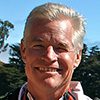 Michael Mace is Curator of Birds for the San Diego Zoo Safari Park. He is responsible for the avian collection and related conservation programs that includes 20 endangered species. He participates in conservation field projects around the world involving endangered and threatened species such as the Andean condor in Colombia, White-bellied heron in Bhutan, Southern ground hornbill in South Africa, Red-necked ostrich in Niger, Guam rail, Light-footed Clapper rail in the United States and California condor in the United States and Mexico.
Michael Mace is Curator of Birds for the San Diego Zoo Safari Park. He is responsible for the avian collection and related conservation programs that includes 20 endangered species. He participates in conservation field projects around the world involving endangered and threatened species such as the Andean condor in Colombia, White-bellied heron in Bhutan, Southern ground hornbill in South Africa, Red-necked ostrich in Niger, Guam rail, Light-footed Clapper rail in the United States and California condor in the United States and Mexico.
He has also authored numerous articles and papers on avian science in peer review journals and magazines.
Michael has also received awards from United States Fish and Wildlife Service as Endangered Species Recovery Champion, Association of Zoos and Aquariums Plume Award – Clapper Rail Recovery Coalition and is a former California Condor Recovery Team member. He also serves as a spokesperson for San Diego Zoo Global.
Michael McGrew
Group Leader, Developmental Biology, The Roslin Institute, University of Edinburgh
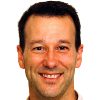 Mike McGrew is a group leader at The Roslin Institute, UK. He obtained his PhD from Boston University in 1998 and pursued a research program in embryology at the IBDM, France. There, he was part of a research group that discovered a basic mechanism controlling the timing of the formation of body segments in vertebrates, now known as the ‘segmentation clock’. Afterwards, he joined The Roslin Institute in 2001 to help develop transgenesis in chickens for use in developmental biology and bio-pharming.
Mike McGrew is a group leader at The Roslin Institute, UK. He obtained his PhD from Boston University in 1998 and pursued a research program in embryology at the IBDM, France. There, he was part of a research group that discovered a basic mechanism controlling the timing of the formation of body segments in vertebrates, now known as the ‘segmentation clock’. Afterwards, he joined The Roslin Institute in 2001 to help develop transgenesis in chickens for use in developmental biology and bio-pharming.
His research interests are now focused on a specialised type of stem cell; the primordial germ cell. His laboratory is interested addressing how germ cells form and migrate in birds and to develop advanced gene targeting techniques for avian germ cells. A benefit of this research will be the technology to create chicken bio-banks (frozen aviaries) using germ cells. This is needed as the traditional techniques used for species cryopreservation using semen and eggs are either inefficient or impossible in birds. Avian bio-banks will aid in the efforts to both manage and conserve both rare and industrial breeds of chickens. A current challenge is to extend this technology to endangered or extinct bird species.
Ben Novak
Research and Science Consultant, Revive & Restore, a project of The Long Now Foundation
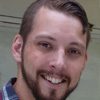 I graduated from Montana State University as one of the first to enter and graduate from the Ecology and Evolution option. I specialized in paleontology, genetics, ecology and ornithology. I’ve been part of an assortment of projects involving identifying diagnostic SNP’s in trout populations, genetic diversity in prairie tiger salamanders, and analysis of biomolecules and bacteria found in dinosaur fossils. I finally broke into my desired field of ancient DNA at the McMaster Ancient DNA Centre, under Dr. Hendrik Poinar, gaining experience via exploring DNA extraction and sequencing of Mastodon fossils – the project now underway to be carried further by more researchers. Passenger pigeons and the possibility of de-extinction within the columbid family has been my passion, and I have pursued work with the species for the past 4 years, reaching my personal breakthrough recently. I am currently a prospective graduate student pursuing PhD programs to continue my de-extinction oriented work. My interests for the project include producing a database of extinct species information and genomes, using genetic mapping to calculate the needed process for de-extinction, and supplying this data for research groups around the world to produce as much pertaining knowledge as possible.
I graduated from Montana State University as one of the first to enter and graduate from the Ecology and Evolution option. I specialized in paleontology, genetics, ecology and ornithology. I’ve been part of an assortment of projects involving identifying diagnostic SNP’s in trout populations, genetic diversity in prairie tiger salamanders, and analysis of biomolecules and bacteria found in dinosaur fossils. I finally broke into my desired field of ancient DNA at the McMaster Ancient DNA Centre, under Dr. Hendrik Poinar, gaining experience via exploring DNA extraction and sequencing of Mastodon fossils – the project now underway to be carried further by more researchers. Passenger pigeons and the possibility of de-extinction within the columbid family has been my passion, and I have pursued work with the species for the past 4 years, reaching my personal breakthrough recently. I am currently a prospective graduate student pursuing PhD programs to continue my de-extinction oriented work. My interests for the project include producing a database of extinct species information and genomes, using genetic mapping to calculate the needed process for de-extinction, and supplying this data for research groups around the world to produce as much pertaining knowledge as possible.
Hendrik Poinar
Principle Investigator, Ancient DNA Centre, McMaster University
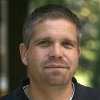 Hendrik Poinar (Ancient DNA Centre at McMaster University in Hamilton, Ontario) is a molecular evolutionary geneticist and biological anthropologist by training, and relies heavily on interdisciplinary research. He uses both chemical and molecular techniques to elucidate the state of preservation within forensic, archeological and paleontological remains. This information is subsequently used to devise novel techniques to extract the molecular information (DNA and/or protein sequences) which is then used to address evolutionary and anthropological questions, such as the “relatedness” of Archaic humans and Neanderthals from a genetic standpoint, sex and diet from prehistoric Native Amerindian hunter-gatherer populations using coprolites samples, and the timing and origin of HIV using archival blood and brain tissue samples.
Hendrik Poinar (Ancient DNA Centre at McMaster University in Hamilton, Ontario) is a molecular evolutionary geneticist and biological anthropologist by training, and relies heavily on interdisciplinary research. He uses both chemical and molecular techniques to elucidate the state of preservation within forensic, archeological and paleontological remains. This information is subsequently used to devise novel techniques to extract the molecular information (DNA and/or protein sequences) which is then used to address evolutionary and anthropological questions, such as the “relatedness” of Archaic humans and Neanderthals from a genetic standpoint, sex and diet from prehistoric Native Amerindian hunter-gatherer populations using coprolites samples, and the timing and origin of HIV using archival blood and brain tissue samples.
Poinar obtained his BS and MS at the California Polytechnic State University in San Luis Obispo in Molecular Biology and Biochemistry, went on to do a PhD in evolutionary genetics under Dr. Svante Paabo then at the Ludwig Maximillians Universitat in Munich. He then completed a postdoc at Oregon State University under Dr. Steve Giovanonni in microbial genetics after which he took a postdoctoral fellowship at the newly formed Max Planck Institute for evolutionary genetics in Leipzig Germany.
William Powell
Director, Council on Biotechnology in Forestry, State University of New York
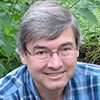 Dr. William A. Powell received his BS in biology in 1982 at Salisbury State University, MD, and his PhD in 1986 at Utah State University studying the molecular mechanisms of hypovirulence in the chestnut blight fungus, Cryphonectria parasitica. He spent over two years as a postdoctoral associate at University of Florida researching transformation techniques using the fungal pathogen, Fusarium oxysporum. In 1989 he became a faculty member at the State University of New York’s College of Environmental Science and Forestry at Syracuse, NY, where he began collaborating with his colleague, Dr. Charles Maynard, researching methods to develop a blight-resistant American chestnut tree. Dr. Powell currently has forty-four peer reviewed publications and one patent. He teaches courses in Principles of Genetics, Plant Biotechnology, and Research Design & Professional Development. He is currently the Director of the Council on Biotechnology in Forestry and SUNY-ESF and the Co-Director of the New York State American Chestnut Research and Restoration Program. One of his significant accomplishments is the enhancement of blight resistance in American chestnut by his research team and collaborators.
Dr. William A. Powell received his BS in biology in 1982 at Salisbury State University, MD, and his PhD in 1986 at Utah State University studying the molecular mechanisms of hypovirulence in the chestnut blight fungus, Cryphonectria parasitica. He spent over two years as a postdoctoral associate at University of Florida researching transformation techniques using the fungal pathogen, Fusarium oxysporum. In 1989 he became a faculty member at the State University of New York’s College of Environmental Science and Forestry at Syracuse, NY, where he began collaborating with his colleague, Dr. Charles Maynard, researching methods to develop a blight-resistant American chestnut tree. Dr. Powell currently has forty-four peer reviewed publications and one patent. He teaches courses in Principles of Genetics, Plant Biotechnology, and Research Design & Professional Development. He is currently the Director of the Council on Biotechnology in Forestry and SUNY-ESF and the Co-Director of the New York State American Chestnut Research and Restoration Program. One of his significant accomplishments is the enhancement of blight resistance in American chestnut by his research team and collaborators.
Kent H. Redford
Principal, Archipelago Consulting
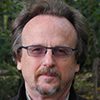 Kent H. Redford is Principal at Archipelago Consulting (archipelagoconsulting.com) that he established in 2012. Prior to that he was Chief Scientist at the Wildlife Conservation Society (WCS) in New York where he led the WCS Institute that worked across WCS to: 1) identify emerging trends and help establish programs to address them; 2) identify key topics within the Institution that needed to be shared with outside audiences. He created and was the senior editor on “State of the Wild” a biennial publication that surveyed the art and practice of conservation, led a series of focused horizon-scanning workshops on key issues that confront the practice of conservation, and led the group that was responsible for reestablishing the American Bison Society and developing a 100 year vision for bison ecological restoration. He received his Ph.D. in Biology from Harvard University (1978). Previously he spent ten years on the faculty at University of Florida where he co-founded the Program for Studies in Tropical Conservation and the Tropical Conservation and Development Programs and five years in the International Program of The Nature Conservancy where he ran the Parks in Peril Program and helped start TNC’s ecoregional program. He has written numerous articles and books on national parks, local peoples, conservation, and wildlife.
Kent H. Redford is Principal at Archipelago Consulting (archipelagoconsulting.com) that he established in 2012. Prior to that he was Chief Scientist at the Wildlife Conservation Society (WCS) in New York where he led the WCS Institute that worked across WCS to: 1) identify emerging trends and help establish programs to address them; 2) identify key topics within the Institution that needed to be shared with outside audiences. He created and was the senior editor on “State of the Wild” a biennial publication that surveyed the art and practice of conservation, led a series of focused horizon-scanning workshops on key issues that confront the practice of conservation, and led the group that was responsible for reestablishing the American Bison Society and developing a 100 year vision for bison ecological restoration. He received his Ph.D. in Biology from Harvard University (1978). Previously he spent ten years on the faculty at University of Florida where he co-founded the Program for Studies in Tropical Conservation and the Tropical Conservation and Development Programs and five years in the International Program of The Nature Conservancy where he ran the Parks in Peril Program and helped start TNC’s ecoregional program. He has written numerous articles and books on national parks, local peoples, conservation, and wildlife.
Oliver Ryder
Director of Genetics, San Diego Zoo Institute for Conservation and Research
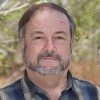 Oliver Ryder, Director of Genetics at the San Diego Zoo Institute for Conservation Research, is recognized globally for his substantive and innovative contributions to establishing and developing the fields of conservation genetics and conservation genomics. He oversees research efforts in cell culture and cryobanking, cytogenetics, population genetics, conservation breeding, evolution and systematics, and applications of genomics technologies to conservation efforts for managed and wild populations of threatened and endangered species. He has guided the development of the Frozen Zoo®, a globally significant collection of frozen cell cultures that includes more than 10,000 individual vertebrates comprising more than 1,000 species. Named as a Fellow of the AAAS for his “outstanding contributions to the understanding of the maintenance of genetic variation in the persistence of populations and the preservation of rare and endangered species,” he also received the Duane Ullrey Award from the American Association of Zoo Veterinarians for “exceptional achievements in the science of wild animal health.” He has served as President of the American Genetic Association. Education: BA in Biology from U.C. Riverside; Ph.D. in Biology from U.C. San Diego. He has a prolific record of publication in highly rated journals.
Oliver Ryder, Director of Genetics at the San Diego Zoo Institute for Conservation Research, is recognized globally for his substantive and innovative contributions to establishing and developing the fields of conservation genetics and conservation genomics. He oversees research efforts in cell culture and cryobanking, cytogenetics, population genetics, conservation breeding, evolution and systematics, and applications of genomics technologies to conservation efforts for managed and wild populations of threatened and endangered species. He has guided the development of the Frozen Zoo®, a globally significant collection of frozen cell cultures that includes more than 10,000 individual vertebrates comprising more than 1,000 species. Named as a Fellow of the AAAS for his “outstanding contributions to the understanding of the maintenance of genetic variation in the persistence of populations and the preservation of rare and endangered species,” he also received the Duane Ullrey Award from the American Association of Zoo Veterinarians for “exceptional achievements in the science of wild animal health.” He has served as President of the American Genetic Association. Education: BA in Biology from U.C. Riverside; Ph.D. in Biology from U.C. San Diego. He has a prolific record of publication in highly rated journals.
Joel Sartore
Contributing Photographer, National Geographic Magazine and Fellow, National Geographic Society
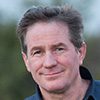 Joel Sartore is a photographer, speaker, author, teacher, conservationist, National Geographic Fellow, and a regular contributor to National Geographic Magazine. His hallmarks are a sense of humor and a Midwestern work ethic.
Joel Sartore is a photographer, speaker, author, teacher, conservationist, National Geographic Fellow, and a regular contributor to National Geographic Magazine. His hallmarks are a sense of humor and a Midwestern work ethic.
Joel specializes in documenting endangered species and landscapes in order to show a world worth saving. He is the founder of The Photo Ark, a multi-year documen- tary project to save species and habitat.
In his words, “It is folly to think that we can destroy one species and ecosystem after another and not affect humanity. When we save species, we’re actually saving ourselves.”
Joel has written several books including RARE: Portraits of America’s Endangered Species, Photographing Your Family, and Nebraska: Under a Big Red Sky. His most recent book, Let’s Be Reasonable is now available wherever books are sold.
In addition to the work he has done for National Geo- graphic, Joel has contributed to Audubon Magazine, Time, Life, Newsweek, Sports Illustrated and numerous book projects. Joel and his work are the subjects of several national broadcasts including National Geographic’s Explorer, the NBC Nightly News, NPR’s Weekend Edition and an hour-long PBS documentary, At Close Range. He is also a regular contributor on the CBS Sunday Morning Show with Charles Osgood.
Beth Shapiro
Professor, Department of Ecology and Evolutionary Biology, University of California Santa Cruz
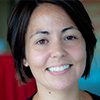 Dr. Beth Shapiro is an evolutionary biologist who uses genomics to better understand the complex relationship between environment and the evolution of species. A pioneer in the young field called “ancient DNA,” Beth travels extensively in the Arctic collecting bones of long-dead creatures including mammoths, horses, and extinct giant bears. Using DNA extracted from these remains, she hopes to learn how environment drives evolution, and why some species may be more susceptible than others to extinction. Currently an Associate Professor in the Department of Ecology and Evolutionary Biology at the University of California Santa Cruz, she received her undergraduate degree in ecology from the University of Georgia in 1999, and a D.Phil in Zoology from Oxford University in 2003, where she studied as a Rhodes Scholar. She has been widely recognized for her research, including honors such as being selected as a MacArthur Fellow, Packard Fellow, Searle Scholar, and a National Geographic Emerging Explorer.
Dr. Beth Shapiro is an evolutionary biologist who uses genomics to better understand the complex relationship between environment and the evolution of species. A pioneer in the young field called “ancient DNA,” Beth travels extensively in the Arctic collecting bones of long-dead creatures including mammoths, horses, and extinct giant bears. Using DNA extracted from these remains, she hopes to learn how environment drives evolution, and why some species may be more susceptible than others to extinction. Currently an Associate Professor in the Department of Ecology and Evolutionary Biology at the University of California Santa Cruz, she received her undergraduate degree in ecology from the University of Georgia in 1999, and a D.Phil in Zoology from Oxford University in 2003, where she studied as a Rhodes Scholar. She has been widely recognized for her research, including honors such as being selected as a MacArthur Fellow, Packard Fellow, Searle Scholar, and a National Geographic Emerging Explorer.
James Tate
Senior Fellow for Ecological Economics and Ethics at the Potomac Institute for Public Policy and a Research Associate at the Smithsonian Institution’s Migratory Bird Center
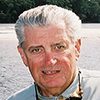 Dr. James Tate is a Senior Fellow for Ecological Economics and Ethics at the Potomac Institute for Public Policy and a Research Associate at the Smithsonian Institution’s Migratory Bird Center.
Dr. James Tate is a Senior Fellow for Ecological Economics and Ethics at the Potomac Institute for Public Policy and a Research Associate at the Smithsonian Institution’s Migratory Bird Center.
Jim currently studies urban biology with an emphasis on the role of science in advising public policy. He is a fly fisherman, bow hunter and bird watcher.
Jim has served in many natural resource conservation roles throughout his career including
• Associate Professor of Natural Resources, and as a Director of the Laboratory of Ornithology at Cornell University,
• Environmental Manager with Atlantic Richfield Company,
• Branch Chief for the U.S. Office of Surface Mining,
• Endangered Species Biologist for the U.S. Fish and Wildlife Service,
• Professional staff to U.S. Senate committees, and as
• Science Advisor to the Secretary of Interior, Gale Norton.
Jim was born in Mauston, Wisconsin and raised in small farming towns in Northern Illinois. He graduated with a BS from Northern Illinois University, a MS from University of the Pacific, and a Ph.D. from the University of Nebraska.
Stanley Temple
Professor Emeritus, University of Wisconsin-Madison
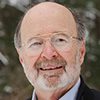 Stanley A. Temple is the Beers-Bascom Professor Emeritus in Conservation in the Department of Forest and Wildlife Ecology and former Chairman of the Conservation Biology and Sustainable Development Program in the Gaylord Nelson Institute for Environmental Studies at the University of Wisconsin-Madison. For 32 years he held the academic position once occupied by Aldo Leopold, and during that time he won every teaching award for which he was eligible. He is currently a Senior Fellow with the Aldo Leopold Foundation. He has received major conservation awards from The Society for Conservation Biology, The Wildlife Society and The Wisconsin Society for Ornithology, and among other recognitions of his achievements, he is a Fellow of The American Ornithologists’ Union, The Explorer’s Club, The Wildlife Conservation Society, and The American Association for the Advancement of Science. He has been President of the Society for Conservation Biology and Chairman of the Board of The Nature Conservancy in Wisconsin.
Stanley A. Temple is the Beers-Bascom Professor Emeritus in Conservation in the Department of Forest and Wildlife Ecology and former Chairman of the Conservation Biology and Sustainable Development Program in the Gaylord Nelson Institute for Environmental Studies at the University of Wisconsin-Madison. For 32 years he held the academic position once occupied by Aldo Leopold, and during that time he won every teaching award for which he was eligible. He is currently a Senior Fellow with the Aldo Leopold Foundation. He has received major conservation awards from The Society for Conservation Biology, The Wildlife Society and The Wisconsin Society for Ornithology, and among other recognitions of his achievements, he is a Fellow of The American Ornithologists’ Union, The Explorer’s Club, The Wildlife Conservation Society, and The American Association for the Advancement of Science. He has been President of the Society for Conservation Biology and Chairman of the Board of The Nature Conservancy in Wisconsin.
Carl Zimmer
Independent journalist and author
 Carl Zimmer writes about evolution, biology, and medicine for National Geographic, The New York Times, and many other publications. He has written a dozen books, including Parasite Rex, Soul Made Flesh, and Evolution: Making Sense of Life, a textbook about evolution co-authored with biologist Doug Emlen. Since 2009, he has been a lecturer at Yale, where he teaches science writing. Zimmer has won numerous awards for his work. He had earned the National Academies Communication Award and is a three-time winner of the American Association for the Advancement of Science Journalism Award. He has also earned fellowships from the John Simon Guggenheim Foundation and the Alfred P. Sloan Foundation
Carl Zimmer writes about evolution, biology, and medicine for National Geographic, The New York Times, and many other publications. He has written a dozen books, including Parasite Rex, Soul Made Flesh, and Evolution: Making Sense of Life, a textbook about evolution co-authored with biologist Doug Emlen. Since 2009, he has been a lecturer at Yale, where he teaches science writing. Zimmer has won numerous awards for his work. He had earned the National Academies Communication Award and is a three-time winner of the American Association for the Advancement of Science Journalism Award. He has also earned fellowships from the John Simon Guggenheim Foundation and the Alfred P. Sloan Foundation




